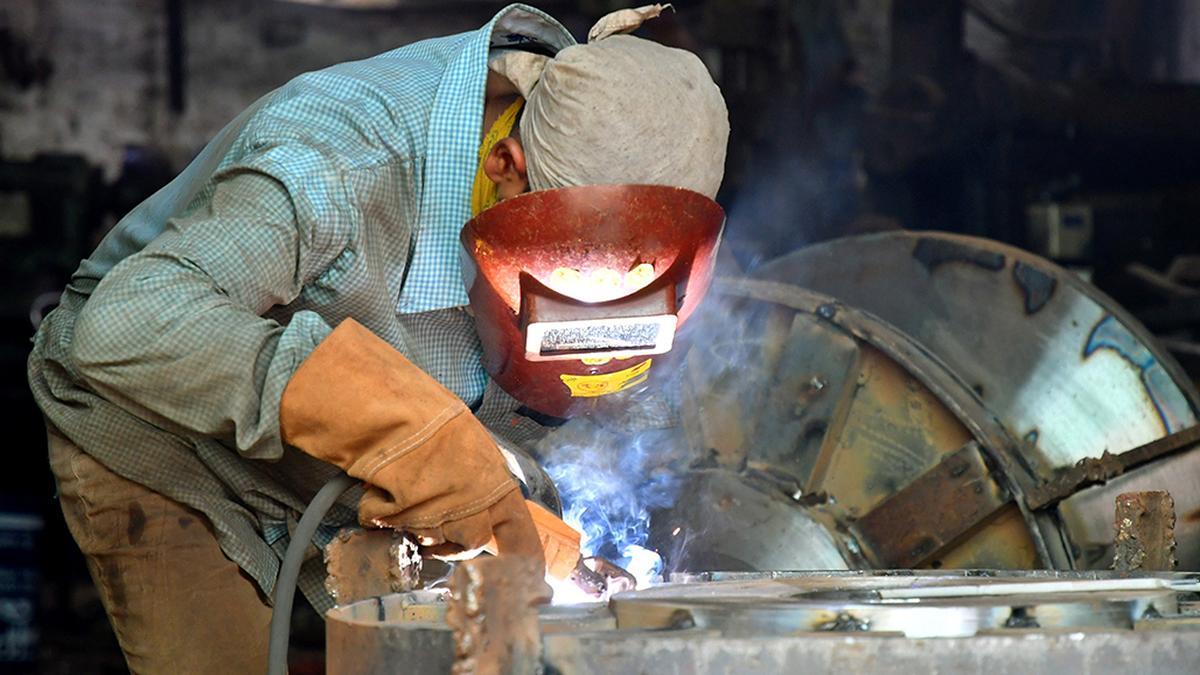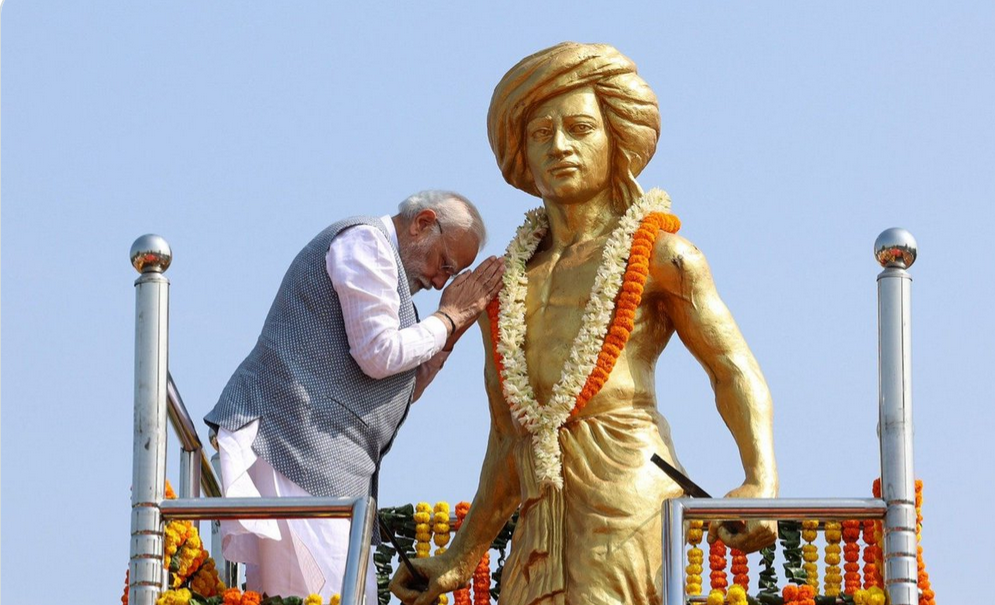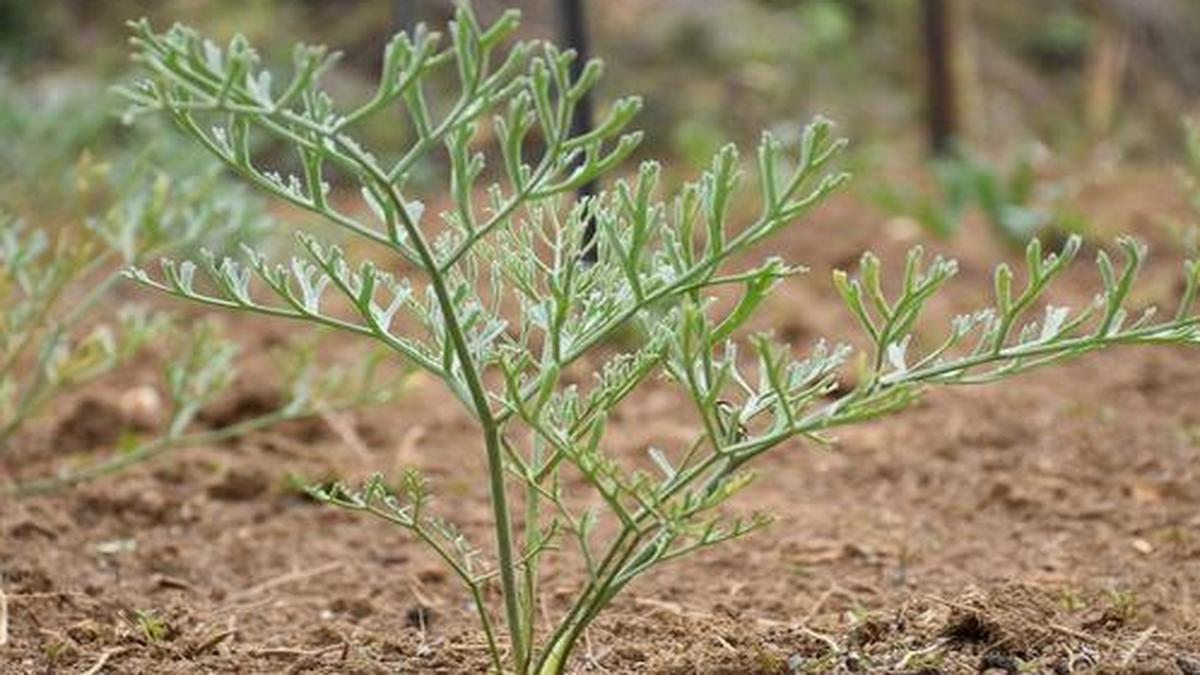Discovery of Spathaspina noohi
- 11 Jun 2025
In News:
A significant addition to India's rich biodiversity has emerged from the forests of Meghalaya with the discovery of a new beetle species, Spathaspina noohi. This unique species not only adds to the biological inventory of the region but also necessitated the creation of an entirely new genus, highlighting the ecological and taxonomic uniqueness of the organism.
Location of Discovery
- The beetle was found in the Umran area of Ri Bhoi district, Meghalaya.
- Elevation: 781 metres above sea level.
- The discovery was made by S. S. Anooj, entomologist from Kerala Agricultural University, and formally described by B. Ramesha in the international journal Zootaxa.
Taxonomic Significance
- Spathaspina noohi belongs to the Curculionidae family, commonly known as weevils, which includes over 60,000 species globally.
- Due to a highly distinctive sword-like spine on its back, it was classified under a new genus—Spathaspina, a name derived from Latin:
- Spatha = sword
- Spina = spine
Subfamily and Tribe Characteristics
- The beetle falls under the Ceutorhynchinae subfamily, which includes about 1,300 species worldwide.
- The subfamily is characterized by:
- Compact, robust body
- Ability to tuck their snout (rostrum) between the front legs when resting
- A visible back structure (mesanepimera)
- Within this subfamily, the beetle is linked to the tribe Mecysmoderini, comprising 8 genera and 107 species. This tribe is noted for its thoracic spines and specialized antenna structures, mostly found in South and Southeast Asia.
Ecological Role of Weevils
While many weevils are considered agricultural pests, others, including Spathaspina noohi, play vital ecological roles such as:
- Controlling invasive plant species
- Maintaining ecosystem balance
Geographical Distribution of Ceutorhynchinae
- These beetles are present across most continents except:
- New Zealand
- Oceania
- Antarctica
- Southern parts of South America
- Their highest diversity is noted in the Palaearctic Region (Europe, North Africa, parts of Asia), followed by the Oriental Region (South and Southeast Asia).
Commemorative Naming
The species is named in honour of P. B. Nooh, IAS, Director of Tourism, Government of Kerala. This acknowledges his contribution to eco-tourism and sustainable development, symbolizing the interconnection between biodiversity conservation and responsible tourism.
SEZ Reforms to Promote Semiconductor & Electronics Manufacturing

- 11 Jun 2025
In News:
Recently, the Department of Commerce notified key amendments to the SEZ Rules, 2006, to boost semiconductor and electronics component manufacturing. These reforms address the high capital intensity and import dependency of the sector and aim to attract pioneering investments.
Key Rule Amendments:
Rule 5: Minimum Land Requirement Relaxed
- What Changed: Minimum land required for SEZs dedicated to semiconductor/electronics manufacturing reduced from 50 hectares to 10 hectares.
- Why it matters
- Eases land acquisition
- Makes SEZs more feasible, especially in smaller industrial clusters
- Encourages pioneering investments in land-scarce regions
Rule 7: Encumbrance-Free Land Norm Relaxed
- What Changed: SEZ land no longer required to be entirely encumbrance-free, if it is mortgaged/leased to the Central or State Government or authorized agencies.
- Why it matters
- Removes a major legal hurdle in land approvals
- Accelerates SEZ project clearance and development timelines
Rule 18: Domestic Supply Allowed from SEZ Units
- What Changed: Semiconductor/electronics SEZ units can now sell products in the Domestic Tariff Area (DTA) after paying applicable duties.
- Why it matters
- Greater market access
- Enhances revenue and profitability
- Breaks away from traditional export-only SEZ model
Rule 53: Clarity on Free-of-Cost Goods in NFE Calculation
- What Changed: Free-of-cost goods received or supplied will now be included in Net Foreign Exchange (NFE) calculations, using customs valuation rules.
- Why it matters
- Encourages R&D and contract manufacturing
- Promotes transparent reporting of value addition
- Aligns with global manufacturing practices
Significance of Reforms:
- Tailored for High-Tech Sectors: Recognises the long gestation and capital-intensive nature of semiconductor and electronic component industries.
- Encourages Domestic and Global Investment: Makes India an attractive destination for global electronics giants.
- Enables Domestic Market Integration: By allowing DTA sales, it expands market access for SEZ-based units.
- Supports India's Semiconductor Mission: Complements existing initiatives like the Semicon India Programme.
National Investment and Infrastructure Fund (NIIF)
- 11 Jun 2025
In News:
Union Finance Minister chaired the 6th Governing Council (GC) meeting of NIIF in New Delhi. The Council urged NIIF to enhance its global presence, diversify funding sources, and attract international investors by leveraging its sovereign-backed model.
About National Investment and Infrastructure Fund
- A government-anchored investment platform to mobilize long-term institutional capital for infrastructure and strategic sectors.
- Operates as a sovereign wealth fund (SWF)-linked asset manager with independent governance.
- Established: 2015 (Union Budget 2015–16)
- Headquarters: Mumbai
- Nodal Ministry: Ministry of Finance (Department of Economic Affairs)
Functions & Objectives:
- Capital Mobilization: Attract domestic & global institutional investors.
- Investment Management: Deploy equity in commercially viable infrastructure.
- Strategic Partnerships: Collaborate with global sovereign wealth & pension funds.
- Policy Alignment: Support national initiatives like Make in India, green energy, and digital infrastructure.
Key Features:
- Public-Private Structure:
- 49% Government of India
- 51% Global and domestic institutional investors (e.g., ADIA, Temasek, CPPIB)
- SEBI-Registered AIF: Category II Alternative Investment Fund (AIF)
- Assets Under Management (AUM): ?30,000+ crore
- Capital Catalysed: ?1.17 lakh crore
- CEO & MD: Sanjiv Aggarwal (since Feb 2024)
Funds under NIIF:
- Master Fund: Core infrastructure (ports, airports, data centres, logistics)
- Private Markets Fund (PMF): Fund of funds model
- India-Japan Fund: Focused on climate action and sustainability
- Strategic Opportunities Fund: Growth equity in strategic sectors
Governing Council (GC) of NIIF:
- Chair: Union Finance Minister (currently Nirmala Sitharaman)
- Members include Finance Secretary, DEA/DFS officials, SBI Chairman, private sector leaders.
- Provides strategic guidance on:
- Fundraising
- Global positioning
- Operationalisation of new funds
- Annual review of performance
Key Outcomes of the 6th GC Meeting (2024–25):
- Proactive Global Outreach: GC urged NIIF to enhance its global presence and professionalise international engagement.
- Diversified Fundraising: Encouraged exploring multiple funding sources beyond traditional sovereign investors.
- Private Markets Fund II (PMF II): Target corpus: $1 billion; first closing imminent.
- Bilateral Fund with the USA: Under discussion to foster cross-border infrastructure investments.
- Greenfield Investment Success: Master Fund investments directed toward ports, logistics, airports, data centres.
- Strong Global Partnerships: Includes ADIA, Temasek, Ontario Teachers', CPPIB, AIIB, ADB, JBIC, and NDB.
- Annual Meetings: GC to convene once every year to review and guide NIIF’s evolving role.
Bhagwan Birsa Munda

- 11 Jun 2025
In News:
On his 125th death anniversary (Balidan Diwas), the Prime Minister of India paid tribute to Bhagwan Birsa Munda, hailing his pioneering role in tribal empowerment and anti-colonial resistance.
Early Life and Identity
- Born: 15 November 1875, Ulihatu, Chotanagpur Plateau (now in Jharkhand).
- Tribe: Munda.
- Title: Revered as “Dharti Aaba” (Father of the Earth).
- Education: Attended Christian missionary schools in Chaibasa; later rejected colonial influence and converted to Vaishnavism, blending it with tribal spirituality.
- Founder of: The Birsait sect, advocating moral reform and cultural awakening among Adivasis.
Role in Freedom Struggle & Tribal Mobilisation
Resistance Against Exploitation:
- Zamindari System: Opposed British-imposed land systems that dismantled the Khuntkatti tribal land tenure, dispossessing tribals and reducing them to bonded labourers.
- Beth Begari: Led resistance against forced labour and revenue policies.
- Forest Rights: Fought against British encroachment and resource extraction in forests.
Cultural and Spiritual Renaissance:
- Condemned social evils like black magic and alcoholism.
- Mobilised tribals using tribal songs, attire, drums, and community gatherings.
- Advocated tribal self-rule and cultural pride against the oppression by Dikus (outsiders).
Ulgulan Movement (1895–1900): The Great Tumult
- Nature: A widespread anti-colonial rebellion across present-day Jharkhand, Odisha, and Bengal.
- Strategy: Guerrilla warfare, targeting British outposts, churches, and police stations.
- Slogan: “Abua Raj setar jana, Maharani Raj tundu jana” (Let the rule of our people begin, let the Queen’s rule end).
- Emphasized a vision of egalitarian tribal raj rooted in indigenous governance systems.
Arrest, Martyrdom, and Legacy
- Arrested: 1895; Died: 9 June 1900 in Ranchi Jail under mysterious circumstances.
- Though the rebellion was crushed, it led to the Chotanagpur Tenancy Act, 1908, securing tribal land rights.
Recognition and Legacy
- Declared as “Bhagwan” (Lord) by tribal communities for his cultural leadership and resistance.
- Institutions named in his honour: Birsa Agricultural University, Birsa Institute of Technology, etc.
- November 15 (birth anniversary) declared Janjatiya Gaurav Diwas (Tribal Pride Day) in 2021 by the Government of India.
- Symbol of tribal assertion, indigenous identity, and early resistance to colonialism in India.
India’s Breakthrough in Heeng Cultivation

- 11 Jun 2025
In News:
CSIR-IHBT reported the first flowering and seed setting of heeng in Palampur (1,300 m above sea level). This confirmed the successful acclimatisation and domestication of Ferula assa-foetida in Indian agro-climatic conditions.
This milestone is significant because:
- It proves India’s capability to cultivate heeng domestically.
- It completes the reproductive cycle—a prerequisite for long-term commercial production and sustainability.
- It expands the scope of cold-arid agriculture beyond traditional zones.
Background:
- Heeng or asafoetida (Ferula assa-foetida) is a perennial herb, long revered in Indian culinary and medicinal traditions.
- It is widely mentioned in ancient texts such as the Mahabharata, Charaka Samhita, Pippalada Samhita, and the works of Panini, known for its digestive, aromatic, and therapeutic properties.
- Despite being the world’s largest consumer of heeng, India was entirely import-dependent until the early 2010s, sourcing it mainly from Afghanistan, Iran, and Uzbekistan.
- This was because the species Ferula assa-foetida, the true source of asafoetida, was not found in India—only related species like Ferula jaeschkeana (Himachal Pradesh) and Ferula narthex (Kashmir and Ladakh) existed, which do not yield the culinary resin.
Botanical & Climatic Requirements:
- Plant Type: Perennial, takes about 5 years to mature and flower.
- Soil: Prefers sandy, well-drained soil with low moisture.
- Climate: Thrives in cold, arid environments, requires annual rainfall below 200–300 mm.
- Temperature Range: Grows best in 10–20°C, tolerates up to 40°C, and survives winter lows of –4°C.
- Propagation: The oleo-gum resin (asafoetida) is extracted by making incisions in the plant’s fleshy taproot and rhizome, yielding a latex that hardens into a gum, which is dried into powder or crystal form.
The Indigenous Cultivation Effort:
In a major step toward self-reliance, the Council of Scientific and Industrial Research – Institute of Himalayan Bioresource Technology (CSIR-IHBT) in Palampur, Himachal Pradesh, initiated India’s first project for indigenous heeng cultivation.
- Seed Procurement: Between 2018–2020, IHBT coordinated with agencies and suppliers in Iran, Afghanistan, Uzbekistan, Tajikistan, and South Africa. Seeds were finally procured from Iran and Afghanistan with import approvals and quarantine protocols handled by ICAR-National Bureau of Plant Genetic Resources (NBPGR).
- Research and Trials: Researchers developed germination protocols for seeds with low viability and conducted trials at IHBT Palampur and Ribling in Lahaul-Spiti to determine altitude-specific suitability and agronomic practices.
- Milestone Event: On October 15, 2020, the first heeng sapling was planted in a farmer’s field in Kwaring village, Lahaul Valley—marking the start of India’s heeng cultivation journey.
Expansion and Institutional Support:
- New Cultivation Zones: From cold desert areas, cultivation extended to mid-hill regions such as Janjheli in Mandi. Demonstration plots and farmer training programmes were established across Lahaul-Spiti, Kinnaur, Mandi, Kullu, and Chamba.
- Early Adopter Villages:
- Lahaul & Spiti: Madgran, Salgran, Beeling, Keylong
- Mandi: Janjehli, Kataru, Majhakhal, Karsog
- Kinnaur: Kalpa, Hango, Reckong Peo, Maling
- Kullu: Kotla–Banjar, Bagsaid, Dhaugi–Sainj
- Chamba: Pangi, Bharmour, Tooh, Mahala
- Heeng Germplasm Resource Centre: Established at IHBT Palampur in March 2022, this national hub oversees research, conservation, seed production, and propagation of heeng.
- Tissue Culture Innovation: A dedicated lab was developed to scale up propagation using modern techniques, supported by the Government of Himachal Pradesh. Ecological niche modelling using GPS and climate data helped map ideal cultivation areas.
